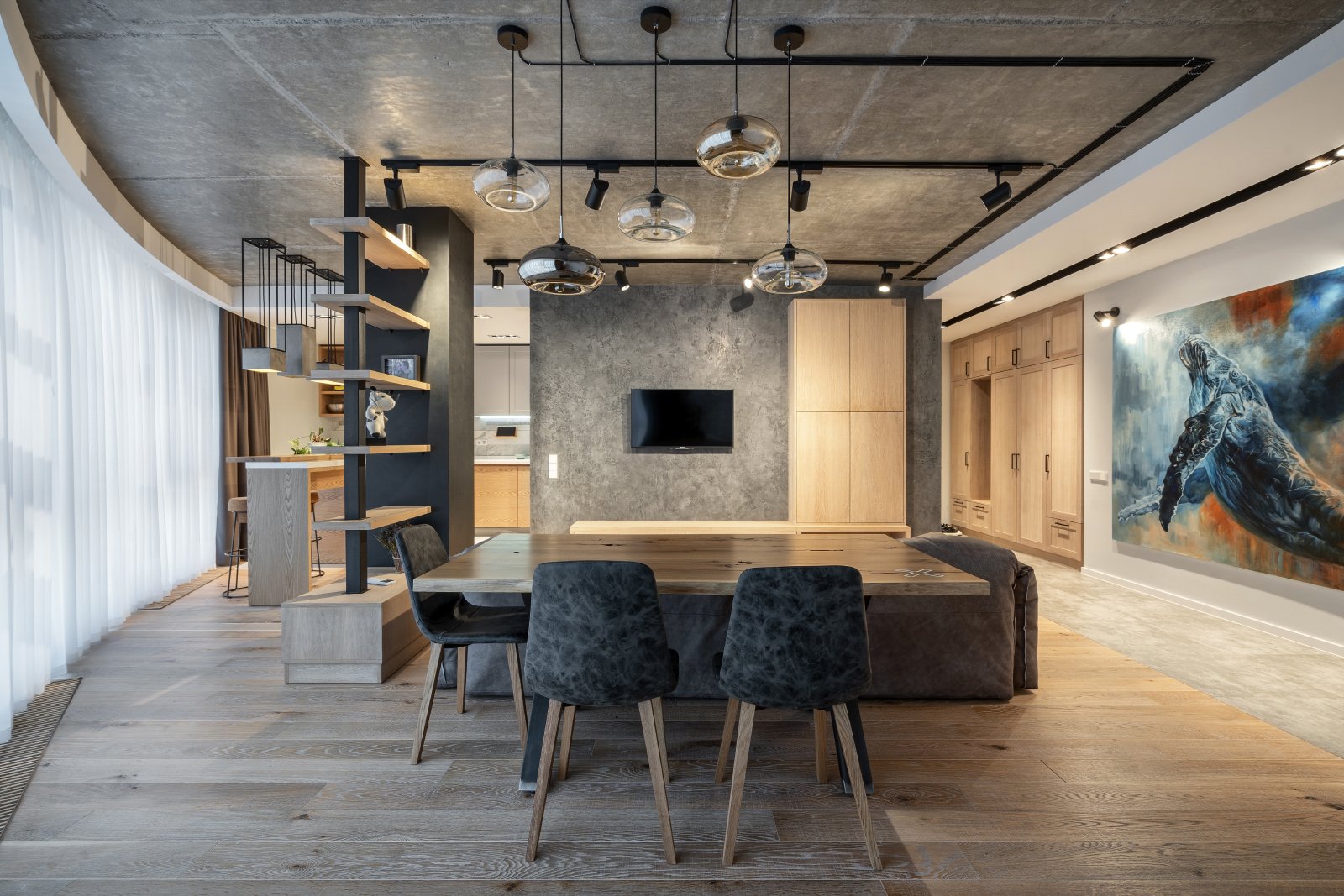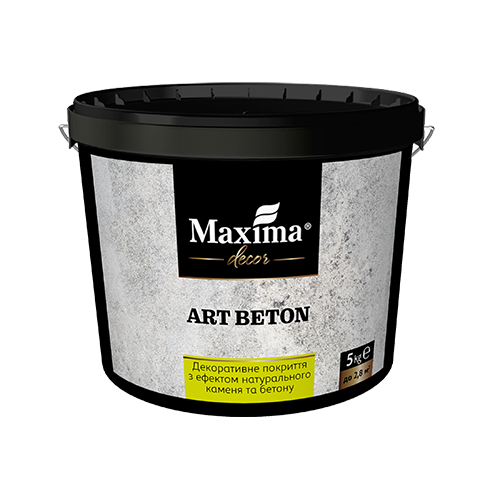Art concrete in the interior
In the epoch of industry development, together with the birth of loft style there comes a fashion trend to use concrete as a part of the interior. Past not long period of time, this trend hardens its position together with the popularity of minimalism and industrial style.
If previously this material was accepted as only starting rough coating, now designers and architects see it as an aesthetic and malleable material for implementing creative ideas.
They create with the help of art concrete designer styles like loft, industrial, grunge, and constructivism, which include even elements made of concrete: stairs, tables, and vases.
Concrete and brick
Brick and concrete in the interior are the most harmonic combination. Their properties are alike and their combinations are perfect.
If the brick prevails, especially if artificially aged, the interiors resemble a medieval castle with a big fireplace, bricky arches, stone floors and other characteristic elements of this style.
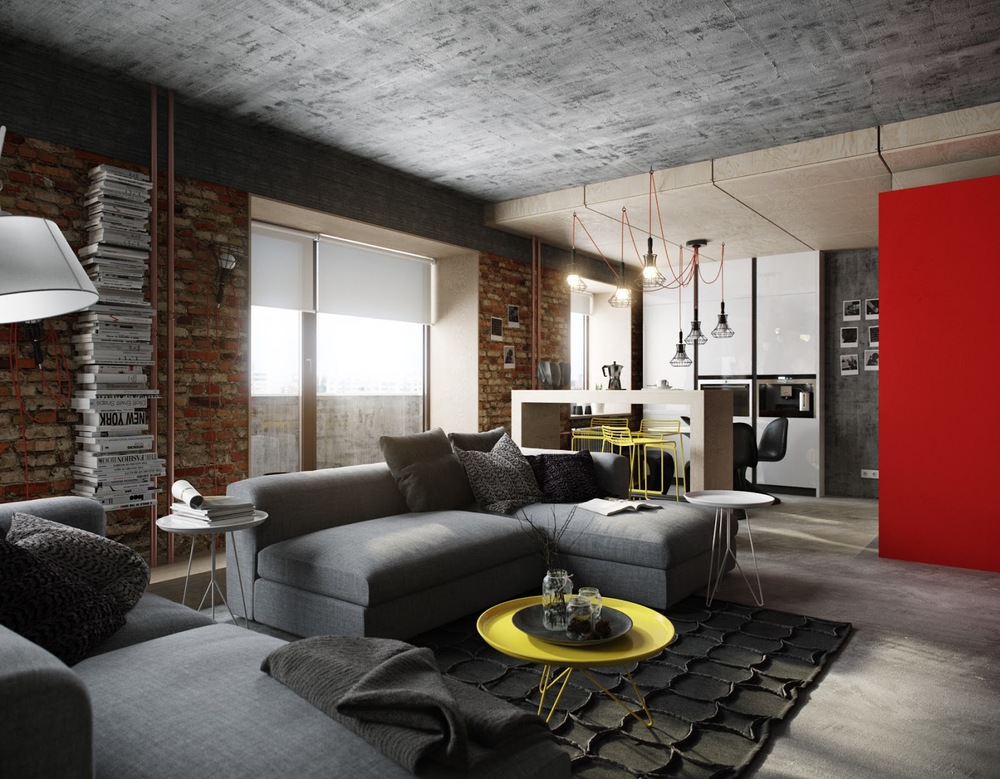
Concrete and steel
Such a duet is a tribute to modernity. Designers create a ceiling, floor and walls a-la concrete with desired texture in the interior and add it with metal stairs, crossbars and furniture with metal frames.
You can dilute the laconicism and strictness of the interior with wooden spots.
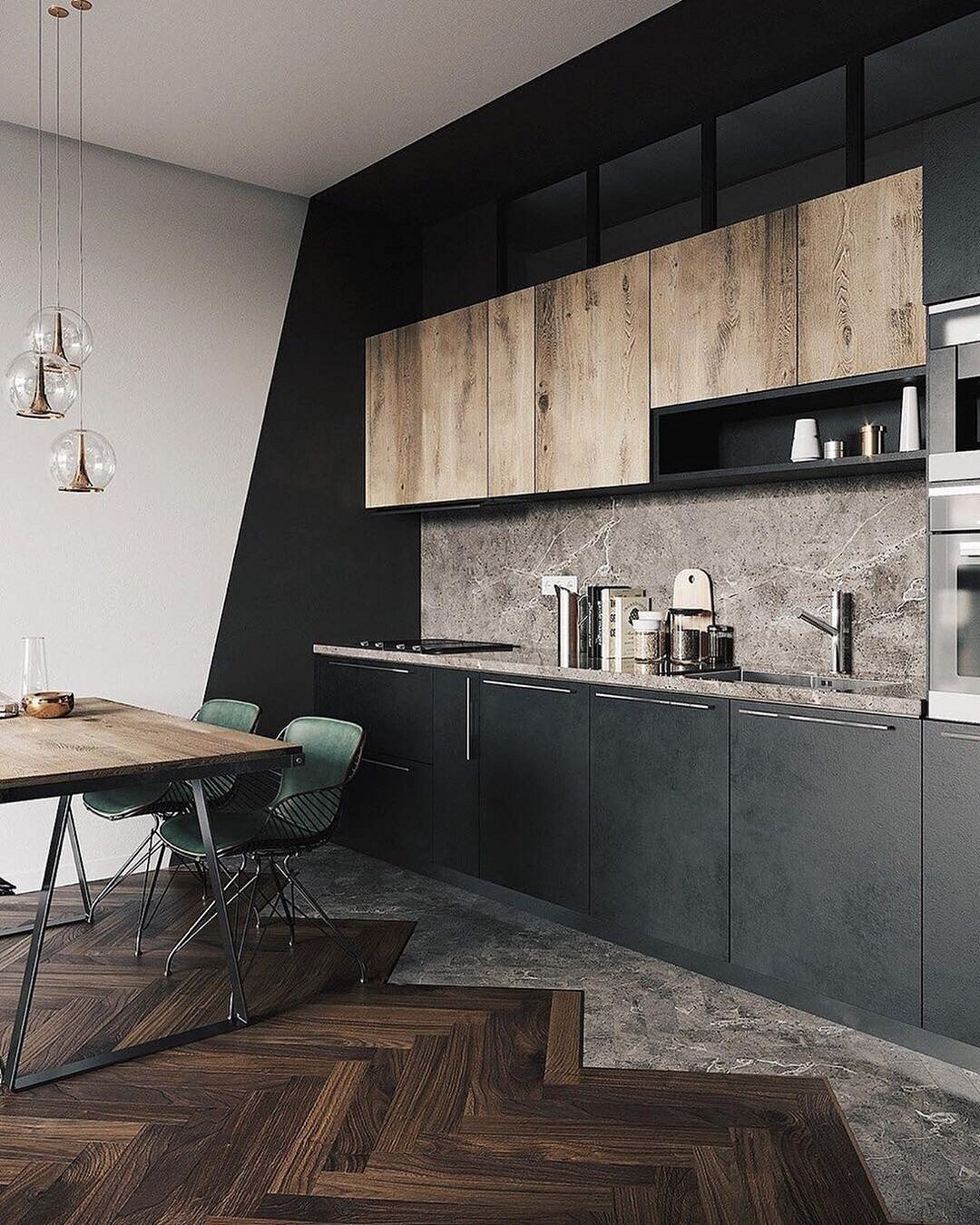
Besides the above-mentioned duets, concrete in the interior can combine with massive windows, and air tubes as a part of the loft interior and also with the decor of chrome or polishing metal.
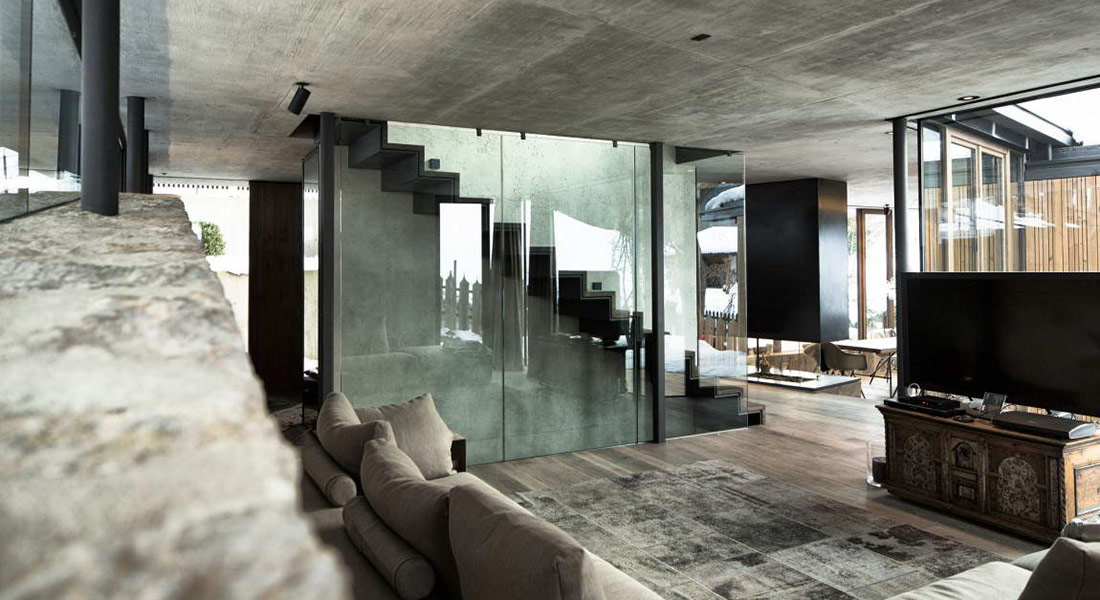
Pictures of Art Beton
Concrete is a harmonic part of minimalistic and loft interiors in a living room. It also suits eclectic and even classic styles.
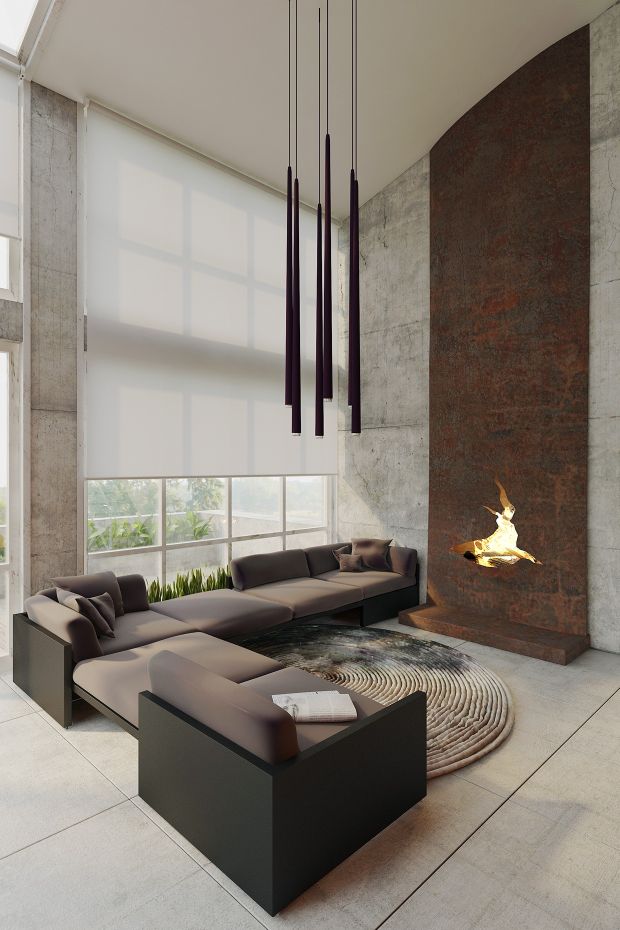
*
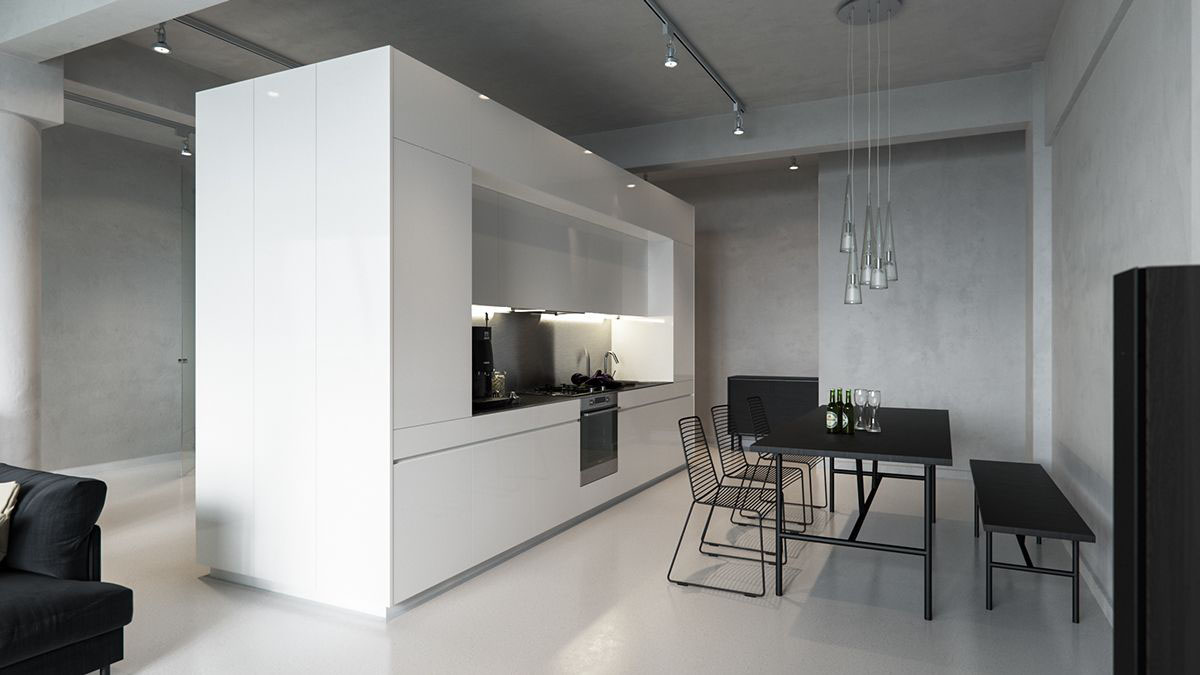
*
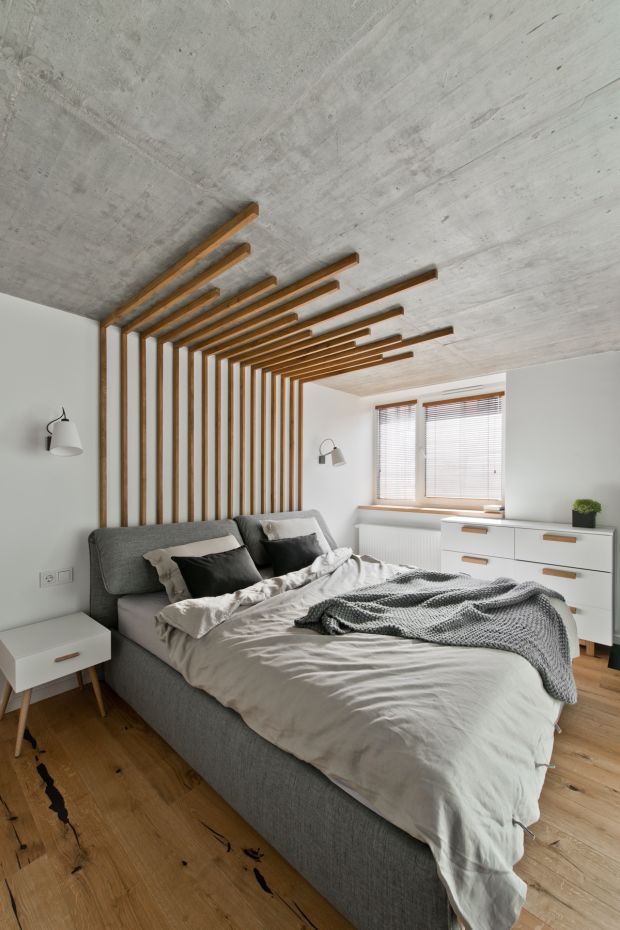
*

*
*
What is ART Beton. Kinds of architectural concrete.
Building compound "Architectural concrete" is a cement-sand mixture in water, with adding various additives (plasticizers, flow agents, hardeners, hydrophobic agents, ceramic or silicate sand, pigments, polymers and others.)
Depending on the content of any of the above-mentioned agents, you can achieve concrete of various kinds with a complex of required features. People are usually focused on three basic kinds of "architectural concrete": geometric (or constructional), decorative and sculptural concretes.
Beside the universal implementation of concrete, there are some difficulties in work. First and foremost is the "life time" of the mixture. This is a problem for decorative use of it.
That is why decorative stuccos are widely used for comfortable works, which imitate the "concrete effect". Such polymeric mixtures become more popular among specialists and designers.
Art Beton TM Maxima decor is a modern acrylic stucco for interior and exterior works, which allow achieving various textures: concrete, concrete-like stucco, travertine-like, shell rock, and other relief texture with polished glossy or matt texture. it forms a hard, weather-resistant, vapor-permeable and durable coating.
Just to be clear, further in this article we will use the term "concrete" in the meaning of "concrete effect", everything that looks like concrete, "art beton" will be understood as a polymeric decorative stucco, which imitates "effect of a concrete".
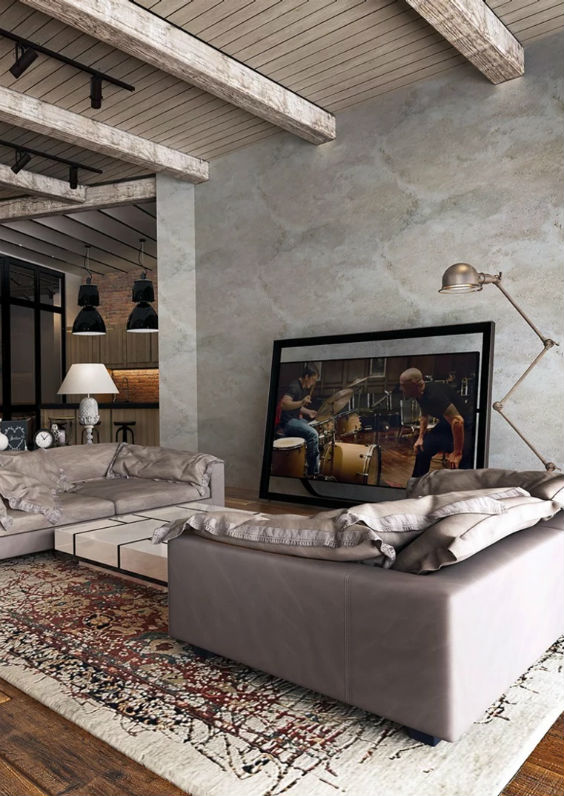
Concrete in interior
This brutal product in the designer's hands can turn into an attractive and aesthetic coating. It is on the same level with ceramics and stone.
The main advantages of concrete are:
availability;
moderate price;
fire safety;
resistance to moisture, mould, fungis.
Recently a few people dared to use concrete in the interior. Standard options were to make garden ways, garage floor, and pillars of the garden house but to use it as a kitchen countertop, floor in the bathroom, or apply decorative concrete on the walls - was a brave decision for the majority.
Last few years although with the increase in popularity of the industrial style and minimalism and the increase in demand for apartments in loft style, concrete has won sympathy among the fans of modern design all over the world. Designers and architects saw in concrete aesthetics and charm and started to use this material actively in their projects.
Concrete walls
Concrete-like walls in the interior are a brave decision, which is characteristic of loft premises.
Implementation of architectural concrete reconstructs desired texture of industrial concrete or stone. The final result is difficult to distinguish from natural concrete but at the same time the texture, which imitates natural stone or concrete can form a warm and cozy interior, which contrasts remarkably with bright elements of decor: pictures, posters, and photos.
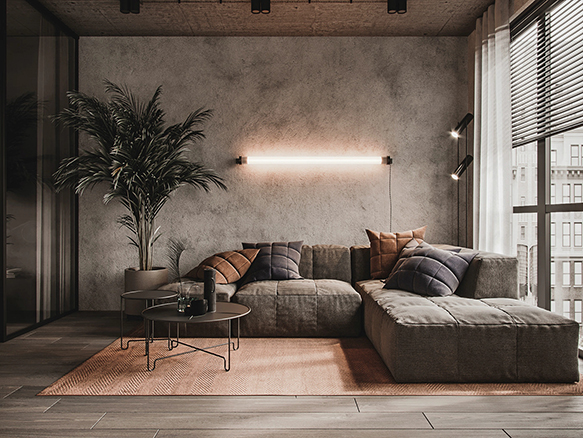
Concrete ceiling
The latest time concrete is oftener used for finishing a ceiling in minimalistic or industrial styles. The technology of coating the ceiling with concrete is not very difficult but the process is painstaking and expensive.
Much easier and less expensive to use imitation of concrete with the help of decorative stucco Art Beton.
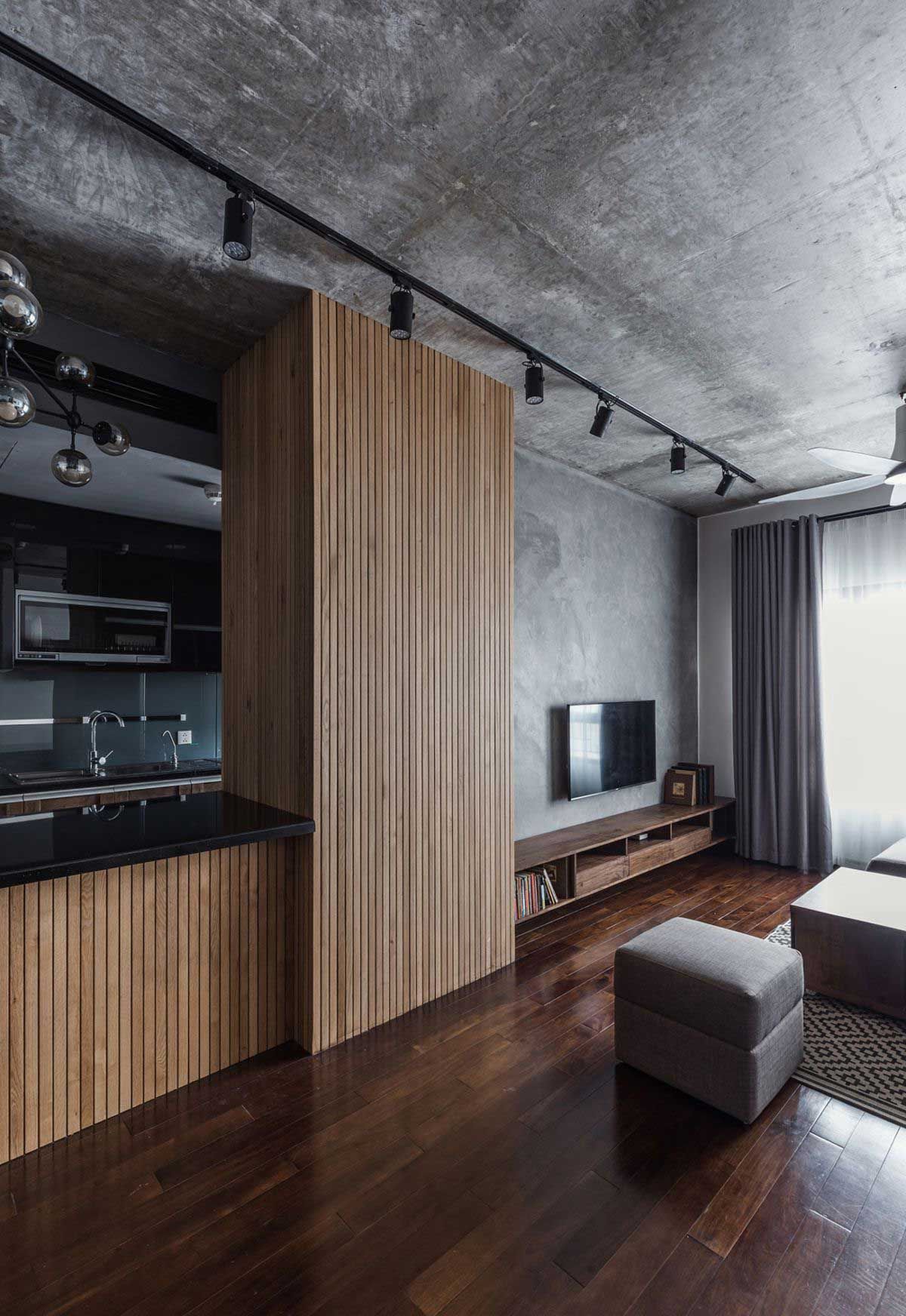
Concrete floor
The concrete is good for coating of floor and it suits any premise. Leave rude texture, you can easily emphasize the extravagantness of industrial style and you can add chic to a premise, oriented to eclectics with polishing concrete floor, coated with a glossy varnish.
It is not expensive, durable, ecological and what is not least it is easy to take care of.
Art Beton is not intended for floor finishing. You need to use for this purpose special mixtures.
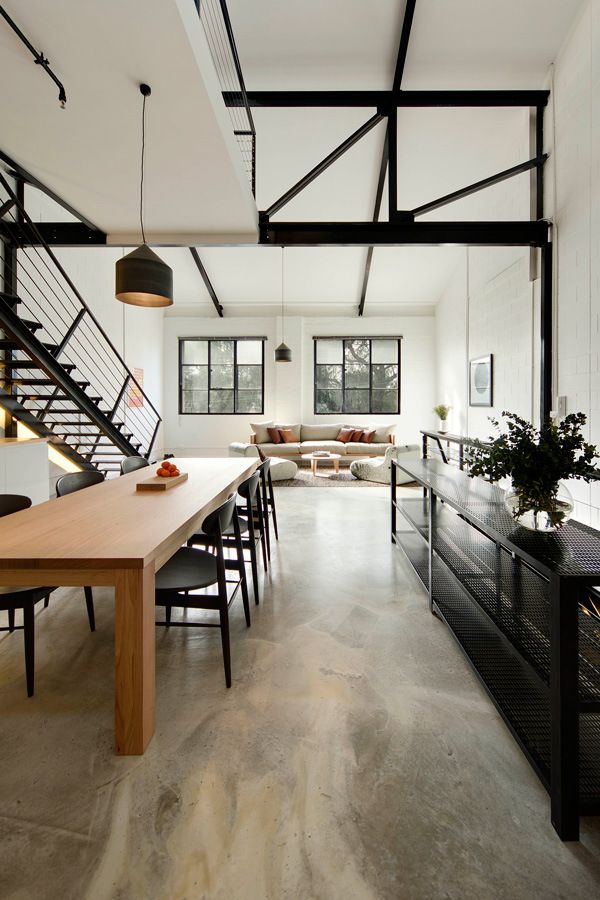
Loft style
"Loft" style originated in the USD during the Great Depression in the 30th years of the XX century when an acute problem appeared in how to inhabit many people with minimal expenses. Several workshops and industrial buildings were reconstructed for living purposes. The finishing in these premises was minimal to lessen the expenses and it pushed the origin of a new style in the design of living premises.
Loft style means a highly unusual for the first sight combination of simplicity and luxury. The very minimum of finishing is the main feature of this style.
Loft style is created with:
- unfinished walls;
- open communications;
- high ceilings;
- wide planning of the premise with the minimum quantity of walls;
- wide windows to the floor;
- mezzanines (half floor, which is formed within the basic floor);
- the mix of industrial elements with old-fashioned and modern technologies.
Concrete ceilings without any decor are suitable to this style. Although the ceilings shall be lit in a way they are not looking gloomy and uncomfy.
The best options for lights in such premises are hanging lights like:
- The only lamp without a lampshade set above working places;
- Halogen lamps. They can be focused in various directions and can emphasize the required areas.
- A chandelier in a form of a ventilator. Such chandeliers light and decorate the concrete ceiling well.
- High-tech. Unusual and bright chandeliers in high-tech style are perfect for the loft, and the grayish shade of concrete emphasizes their originality.
- Retro. You can choose retro lights, which emphasize the ascetic look of the premise.
People oftener use cold colors ratio for decorating the walls. Black, white and grey shades prevail. They must be a base for the whole interior, whether the material is concrete, stucco, brick or others. As the bright accent colors usually use brick red, blue and dark blue shades. Green color details add coziness. Bright spots can create interesting contrasting effects.
What combines with the concrete in interior
Due to the multifaced nature of the concrete (color ratio, texture, plasticity) designers combine the effect of concrete with other materials in the interior. Let's have a look at the most popular and successful combinations from the designers' experience.
Concrete and wood
In spite of both materials are natural (at least the base of concrete), such a duet creates a contrast effect - chilly and industrial tunes of concrete and the warmth of the natural beauty of wood. Keeping in mind this fact, the accent is made on one of the materials according to personal desires.
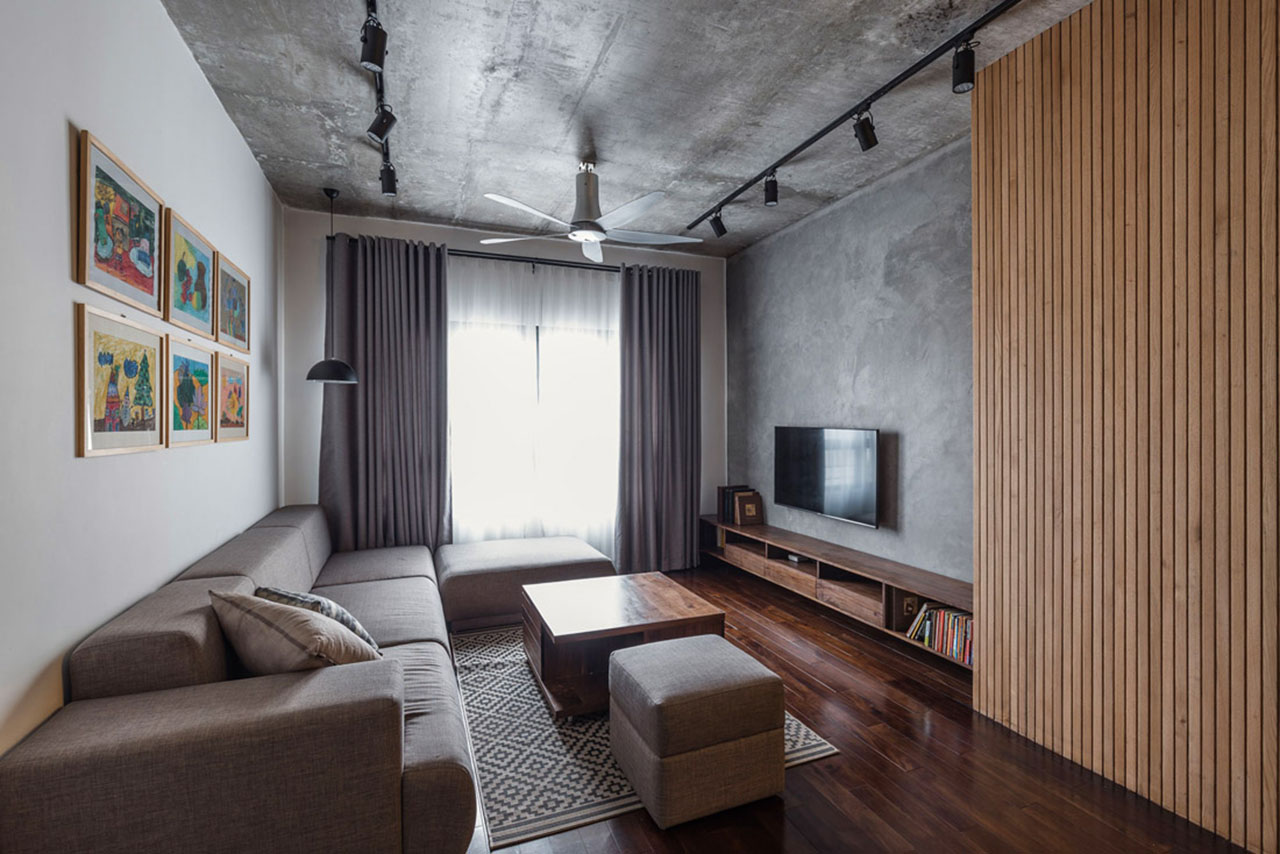
- 15.06.2022
